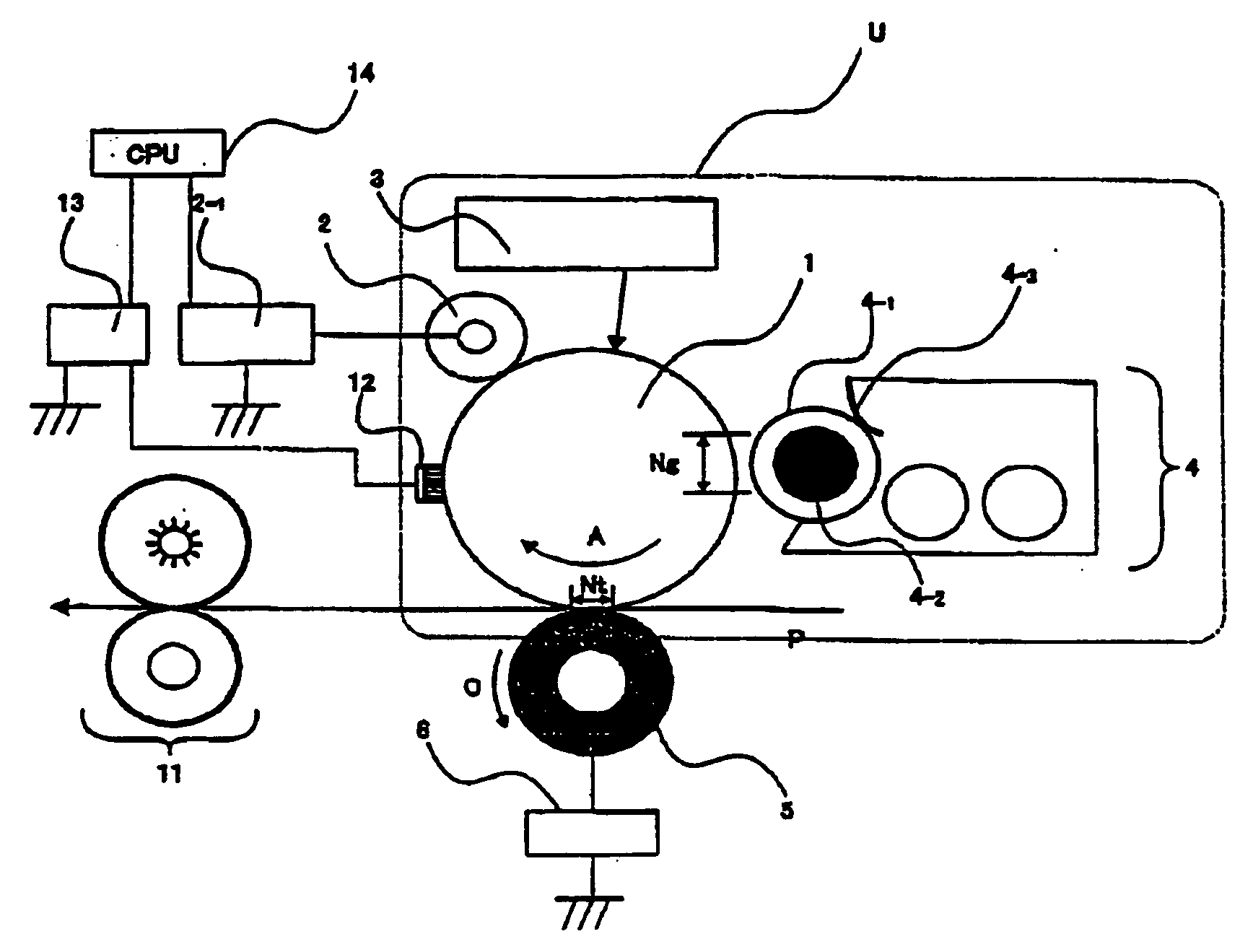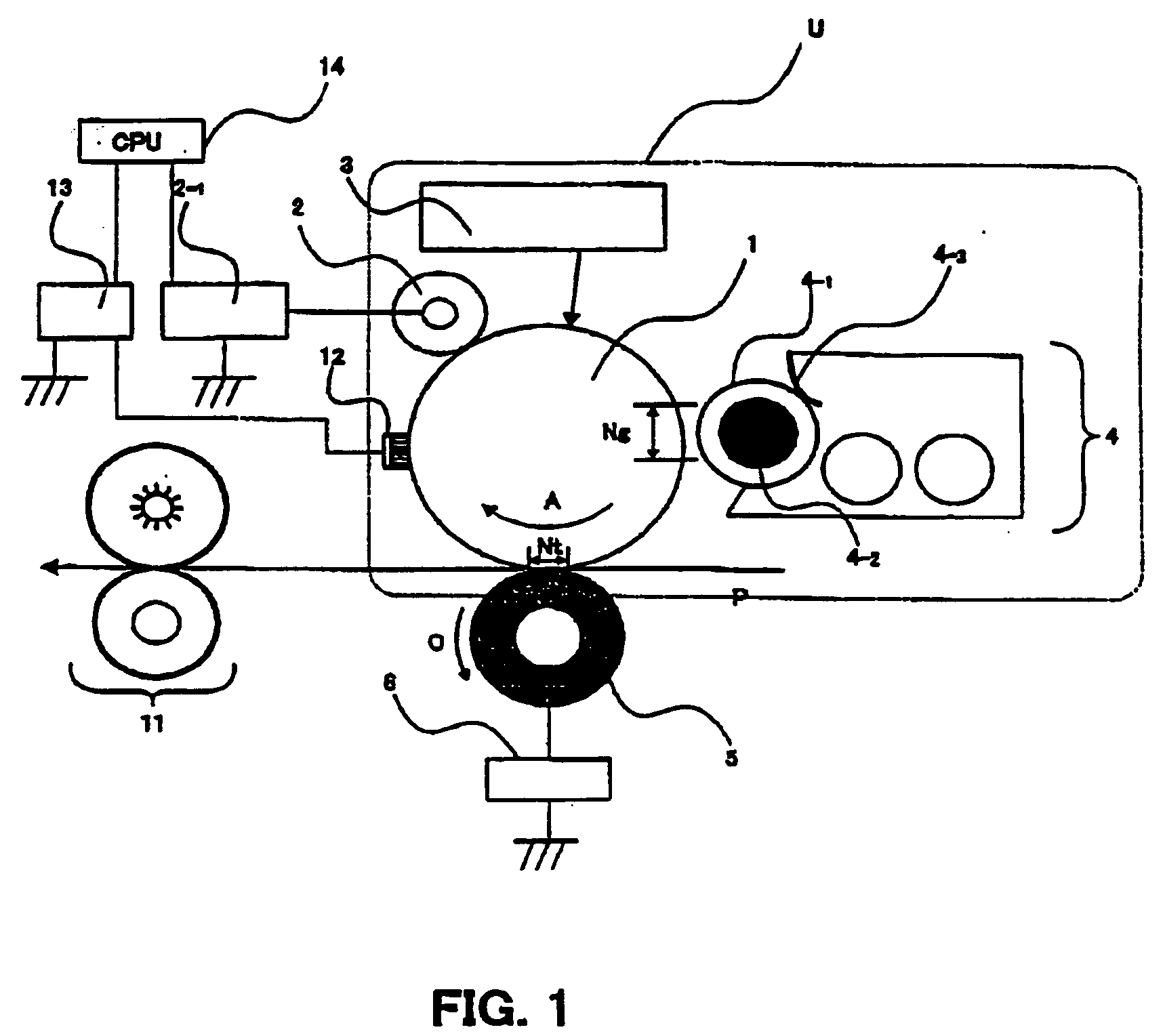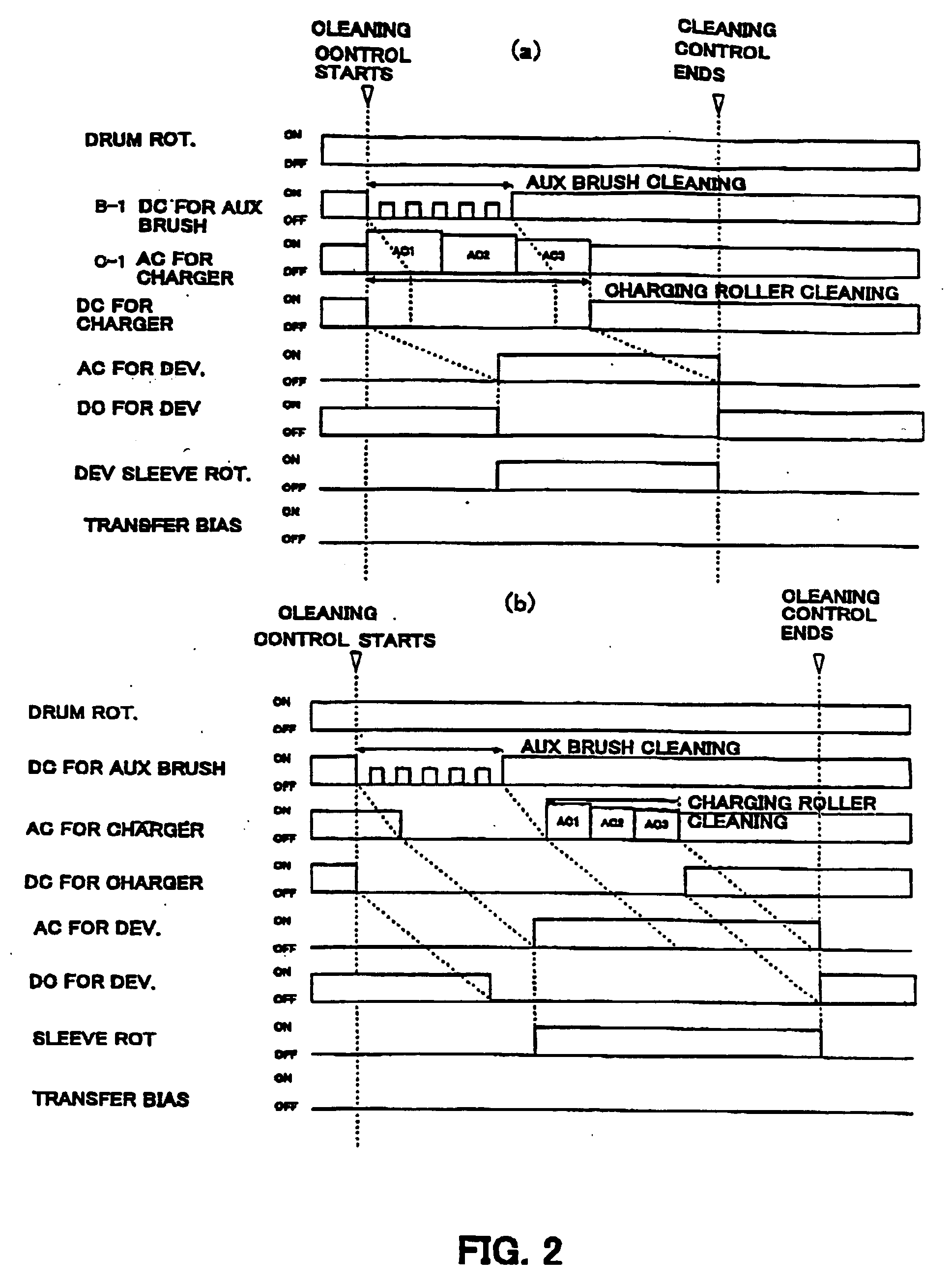Image forming apparatus
a technology of image forming apparatus and forming drum, which is applied in the direction of electrographic process apparatus, corona discharge, instruments, etc., can solve the problems of reducing the overall size the inability of the peripheral surface of the photoconductive drum to be uniformly charged, and the improper charge of the photoconductive drum, etc., to prevent the occurrence of carrier adhesion, improve the cleaning efficiency of the image forming apparatus, and output excellent images
- Summary
- Abstract
- Description
- Claims
- Application Information
AI Technical Summary
Benefits of technology
Problems solved by technology
Method used
Image
Examples
embodiment 1
[0052] First, referring to FIGS. 1-3, the image forming apparatus in the first embodiment of the present invention will be described.
[0053] Referring to FIG. 1, a cylindrical photoconductive drum 1 as an image bearing member is being rotationally driven in the direction indicated by an arrow mark A at a peripheral velocity of 100 mm / sec. A charge roller 2 as a charging means is of a contact type, that is, a charge roller which is placed in contact with the photoconductive drum 1 to charge the photoconductive drum 1. It comprises an electrically conductive metallic core, an electrically conductive rubber layer coated on the peripheral surface of the metallic core, and a resistive layer coated on the peripheral surface of the rubber layer. It is rotated by the rotation of the photoconductive drum 1. To the metallic core of the charge roller 2, the combination of a DC voltage of −700 V and an AC bias with a peak-to-peak voltage of 1 KVp-p is applied from a charge bias power source 2-1...
embodiment 2
[0108] Next, the second embodiment of the present invention, which is a method for determining the timing with which a toner charging brush is cleaned, and the timing with which a charge roller in cleaned, in accordance with cumulative picture element count or cumulative exposure time, will be described.
[0109] The structure of the image forming apparatus in this embodiment is similar to that in the first embodiment. Therefore, its detailed description will not be given here.
[0110] First, referring to the flow chart given in FIG. 4, what kind of controls are executed with the use of the structural arrangement of this image forming apparatus will be described.
[0111] In the case of the flow chart given in FIG. 4, as a given printing job is started, the counting of the cumulative picture elements (which hereinafter will be referred to as pic-cell) or the cumulative exposure time, is started.
[0112] Then, it is continuously checked whether or not the value of the cumulative pic-cell c...
embodiment 3
[0116] The above described first and second embodiments were related to an image forming apparatus having only a single image formation unit. Instead, this embodiment is related to an image forming apparatus having multiple image formation units, as does a color image forming apparatus.
[0117] Except for the number of the image formation units, the structure and function of the image forming apparatus are the same as those in the first embodiment. Therefore, the structural components of the image forming apparatus in this embodiment, which are the same as those in the first embodiment, are given the same referential symbols as those given in the first embodiment, and they will be not described here.
[0118] As a typical image forming apparatus to which this embodiment of the present invention is applicable, an image forming apparatus such as the one shown in FIG. 5 that comprises four drums and an intermediary transfer belt will be described. It should be noted here that this embodim...
PUM
 Login to View More
Login to View More Abstract
Description
Claims
Application Information
 Login to View More
Login to View More - R&D
- Intellectual Property
- Life Sciences
- Materials
- Tech Scout
- Unparalleled Data Quality
- Higher Quality Content
- 60% Fewer Hallucinations
Browse by: Latest US Patents, China's latest patents, Technical Efficacy Thesaurus, Application Domain, Technology Topic, Popular Technical Reports.
© 2025 PatSnap. All rights reserved.Legal|Privacy policy|Modern Slavery Act Transparency Statement|Sitemap|About US| Contact US: help@patsnap.com



